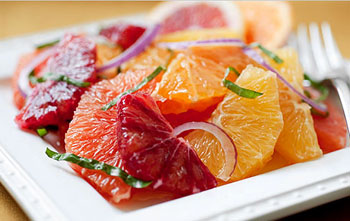
Not so at the cruciferous vegetables table. There lie the Brussels sprouts, kale, cabbages, broccoli, and cauliflower (of which only the funky Romanesco variety is getting any attention). These uncomely vegetables patiently wait for someone to come by and check them out. It is a long wait.
This past Sunday the Brussels sprouts were carelessly dumped in a lop-sided pile, causing stray runaway sprouts to keep rolling off the table's edge and onto the concrete. Inspired by Molly’s witty post at Orangette, I thought I would take on a challenge. A makeover for three undatable vegetables: Brussels sprouts, cauliflower, and broccoli. The make-up? Breadcrumbs.

 Frasier Fir, boxwood, magnolia, grapevine – all traditional bases for wreaths. We can pick them up at garden centers and Christmas tree vendors and even grocery stores, but sometimes it is fun to spice up ye olde wreath with some seasonal flair.
Frasier Fir, boxwood, magnolia, grapevine – all traditional bases for wreaths. We can pick them up at garden centers and Christmas tree vendors and even grocery stores, but sometimes it is fun to spice up ye olde wreath with some seasonal flair. Pop Quiz: What makes two people's three dinners, two lunches, and fills a whole leftover Martha Stewart BPA-free glassware? The answer, my friends, is Italian Wedding Soup. You didn't hear it from me, but this stuff fulfills all the food groups, ensures your fill of kale for a day, and pumps you up full of vitamins. And, it's delicious.
Pop Quiz: What makes two people's three dinners, two lunches, and fills a whole leftover Martha Stewart BPA-free glassware? The answer, my friends, is Italian Wedding Soup. You didn't hear it from me, but this stuff fulfills all the food groups, ensures your fill of kale for a day, and pumps you up full of vitamins. And, it's delicious. I have gone on and on here about how much I love mashed potatoes (
I have gone on and on here about how much I love mashed potatoes ( Good citrus can almost make you glad it’s winter. When it’s in season — that’s now — it’s equal or superior to anything else you can buy in the plant kingdom. Any way you can devise to eat it, you’re taking advantage of something at its peak.
Good citrus can almost make you glad it’s winter. When it’s in season — that’s now — it’s equal or superior to anything else you can buy in the plant kingdom. Any way you can devise to eat it, you’re taking advantage of something at its peak.
